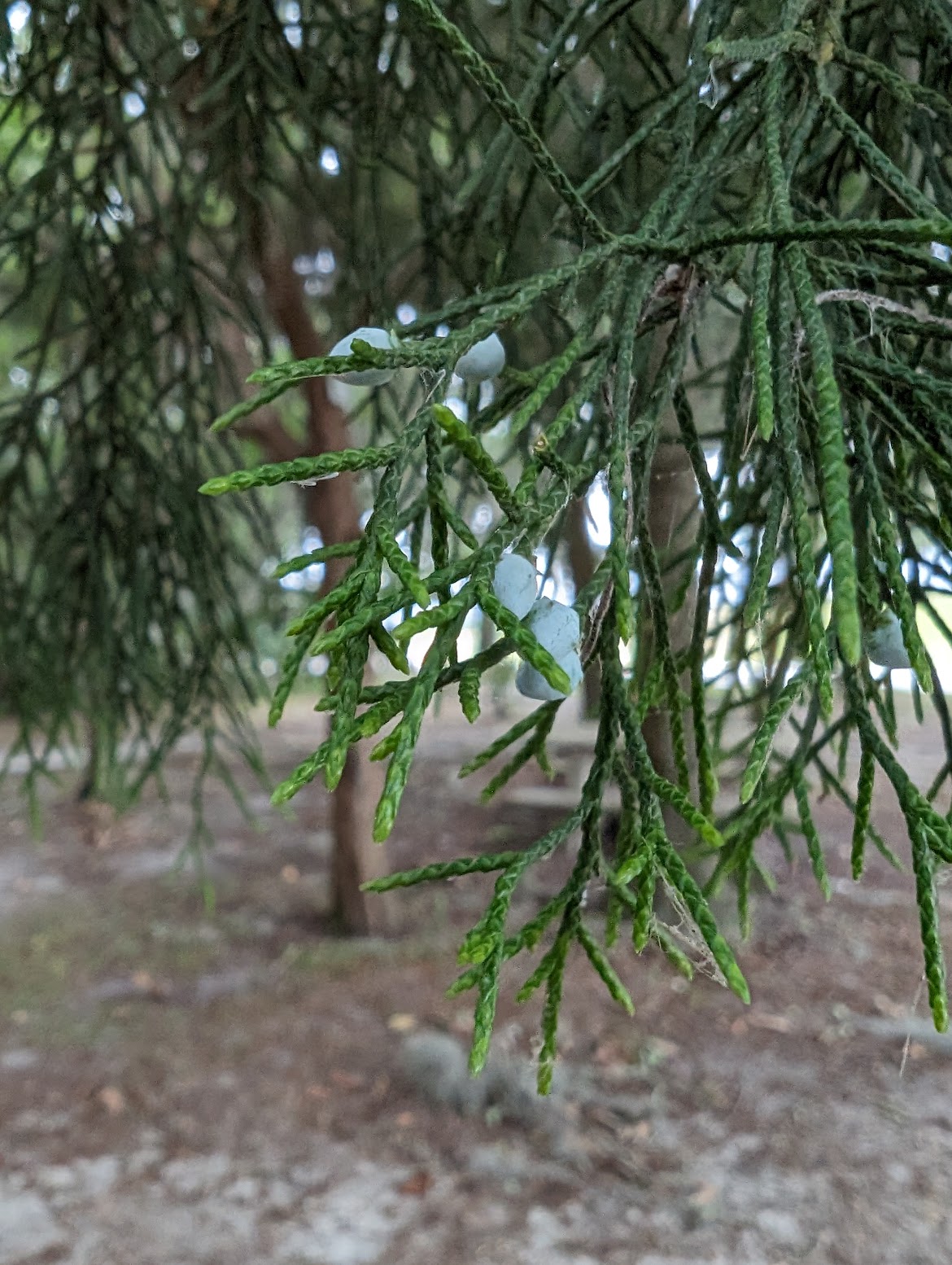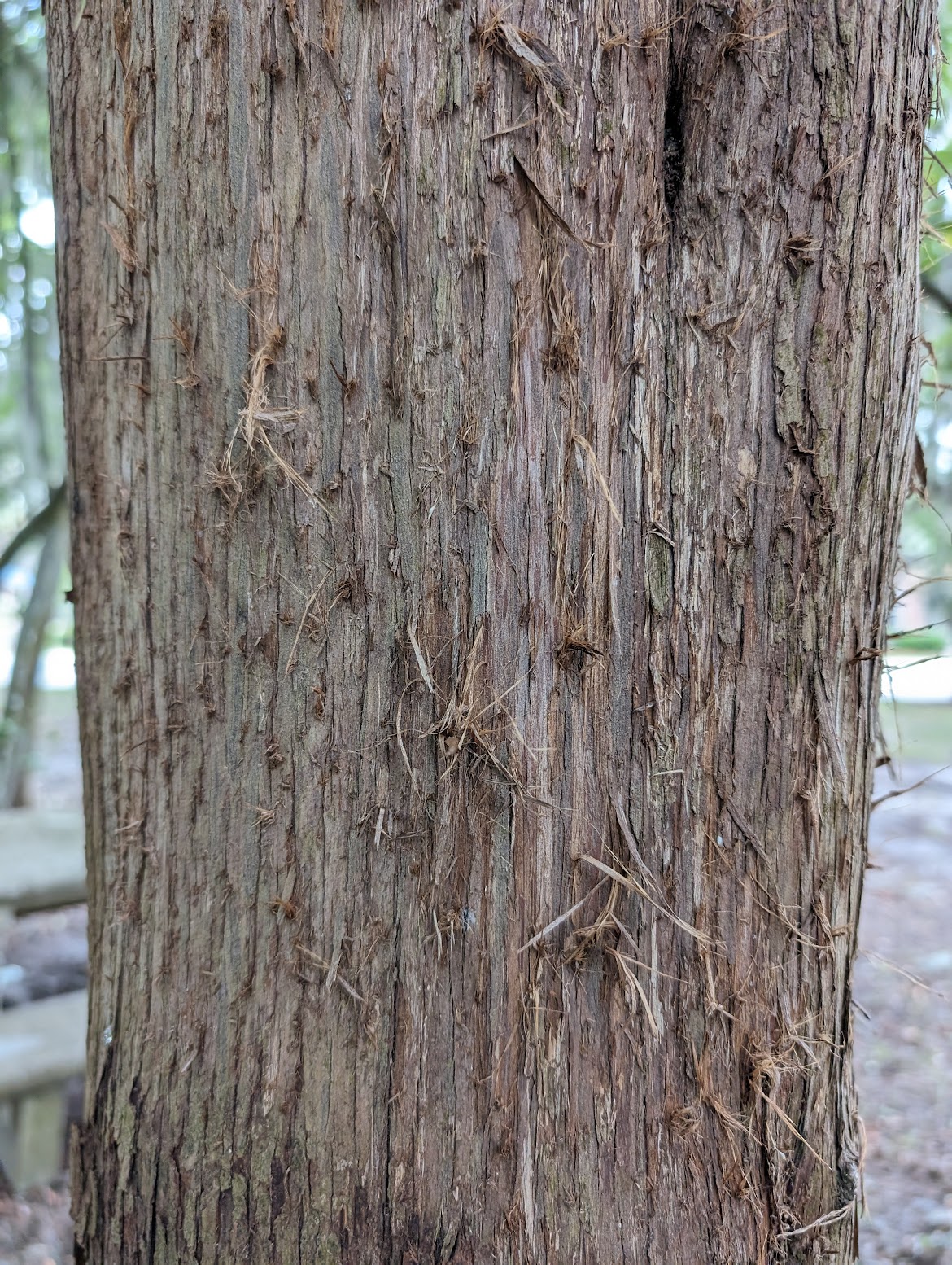Cupressaceae - Cypress Family
In 2024, this eastern redcedar was 31 feet tall and had a diameter of 10 inches. Based on USDA Forest Service models, it will absorb approximately 725 lbs. of carbon over the next 20 years. Put simply, this tree alone will offset up to 2,932 car miles worth of carbon dioxide.
See all species on our Campus Tree Tour.
Introduction
The eastern redcedar is one of the most well-known and widely distributed conifer trees within the Eastern United States. The tree is valued for its durability and significance to wildlife. In natural and urban settings, its cones, often called “juniper berries,” are a nutritious food source to many animals.
Physical Description
Life expectancy: 100 – 300 years
Height: 40 - 50 feet
Crown: 10 - 20 feet
Diameter: 12 - 24 feet
Bark: Thin, shreddy, and a brownish red color that has aromatic cedar smell.
Leaves: Evergreen leaves that are simple and scale-like when mature, and when crushed smell like cedar. On new growth the leaves are sharp awls (needle-like).
Flowers: No flowers
Fruits: Produces cones, not fruits, during the fall. Cones are glaucous (bluish grey), fleshy, and less than 0.5 inches. Often called “juniper berries” despite not being a berry.
Key Identification Characteristics: Fragrant mature and immature leaves, bark
Past and Present Uses
Over time, the eastern redcedar has maintained its status as a commercially viable tree due to its fragrant wood, tolerance to extreme weather, and adaptability to urban settings. Historically, it was harvested in Florida for making pencils, and in Cedar Key, there were mills that produced pencils in the late 1800’s.
This tree is also widely planted in windbreaks around farm fields to prevent erosion and protect crops like tomatoes from wind damage. Since eastern redcedar wood produces a fragrance, it can serve as a natural insect repellent. As a result, it is commonly used for paneling in closets and as filling for dog beds.
Ecological Importance
Origin: Native to the United States
Native Range: Found northwards to Ontario and Quebec, south to Florida, and westward to the Great Plains.
Eastern redcedars grow under varying and extreme climatic conditions upon ridgetops, slopes, and flatlands throughout their natural range. In Florida, they are associated with three plant communities: Maritime Hammock, Hydrologic Hammock, and Alluvial Forests.
The evergreen leaves and sturdy branches of eastern redcedar provide adequate roosting cover and nest materials for birds. Its nutritious cones provide fat, fiber, and carbohydrates to various bird species like cedar waxwings and bobwhites, as well as mammals like rabbits and foxes. Since these trees are dioecious (have separate male and female individuals), these cones will only be found on the female trees.
More Information
https://edis.ifas.ufl.edu/publication/ST331
References
Andreu, M. G., Tamang, B., Friedman, M. H., & Rockwood, D. (2022). FOR192/FR253: The benefits of windbreaks for Florida growers. Ask IFAS - Powered by EDIS. https://edis.ifas.ufl.edu/publication/FR253
Florida Natural Areas Inventory. (2009). Alluvial forest - longleaf pine. Alluvial Forest. https://www.fnai.org/PDFs/NC/Alluv_Forest.pdf
Gilman, E., & Watson, D. (2014). Enh-486/ST327: Juniperus virginiana: Eastern redcedar. Ask IFAS - Powered by EDIS. https://edis.ifas.ufl.edu/publication/ST327
i-Tree. (2006). Tree tools - calculate the benefits of trees!. i-Tree. https://www.itreetools.org/
Lake Forest College. (n.d.). Juniperus virginiana (eastern red cedar) Cupressaceae. Lake Forest College. https://www.lakeforest.edu/academics/majors-and-minors/environmental-studies/juniperus-virginiana-(eastern-red-cedar)-cupressaceae
Lawson, E. R. (n.d.). Eastern Redcedar. Juniperus virginiana L. https://www.srs.fs.usda.gov/pubs/misc/ag_654/volume_1/juniperus/virginiana.htm



